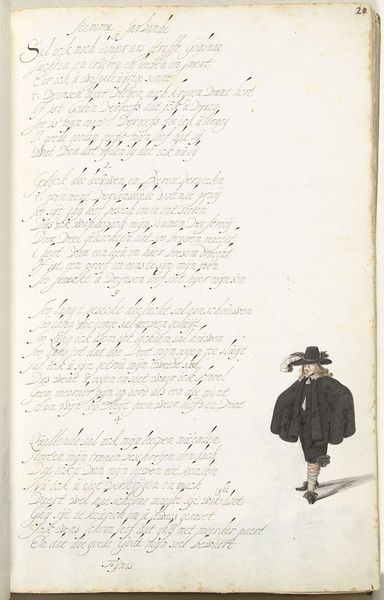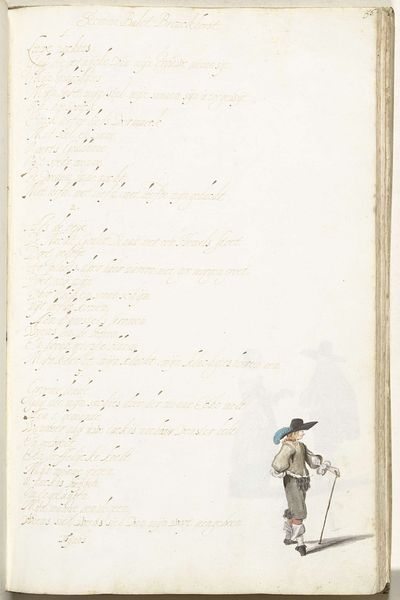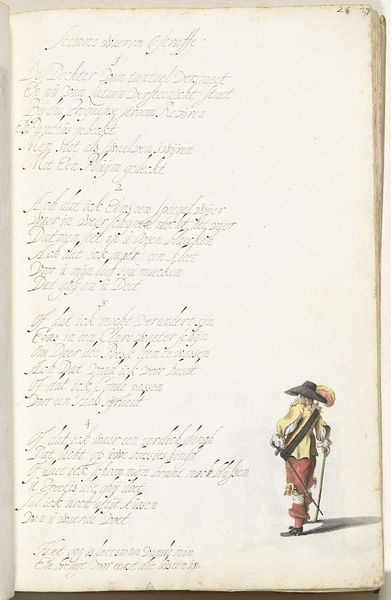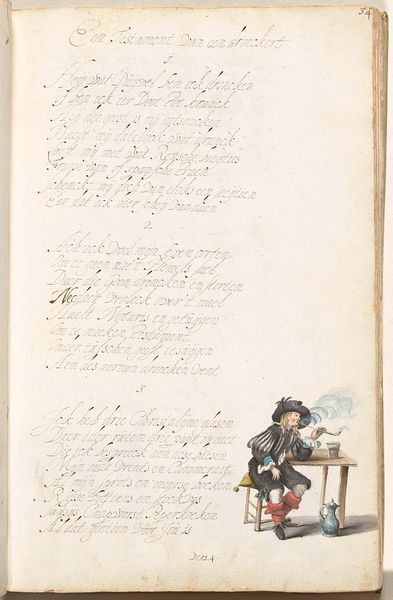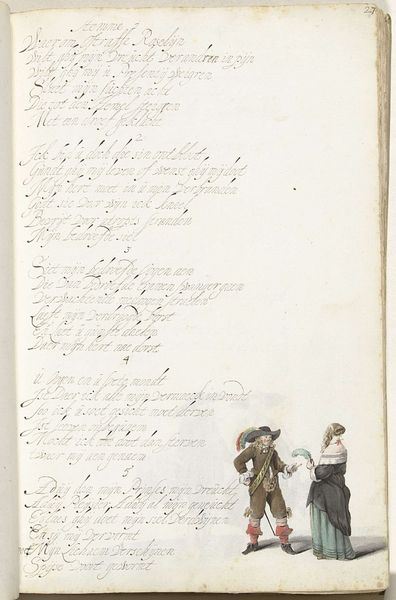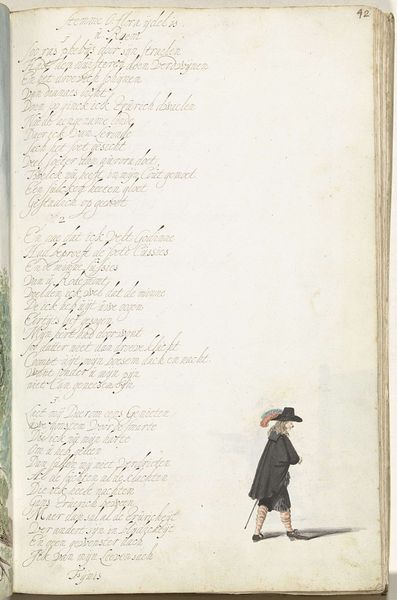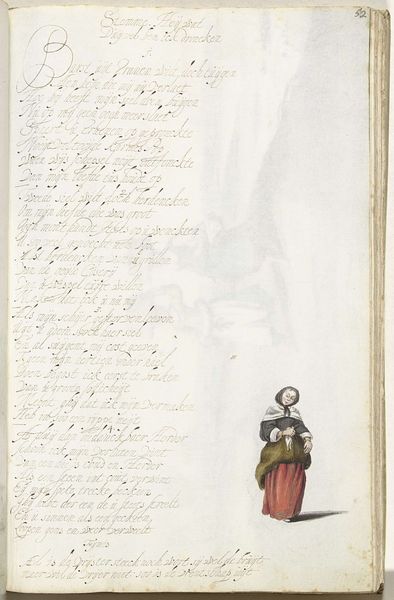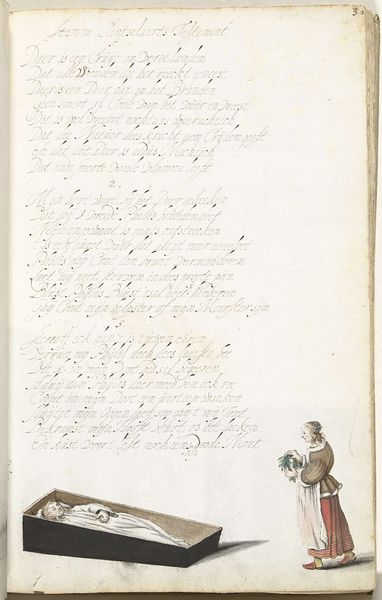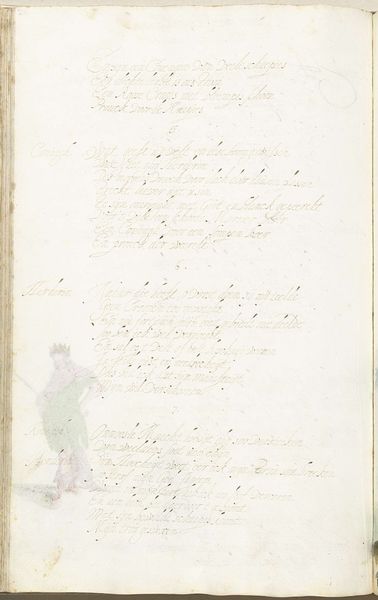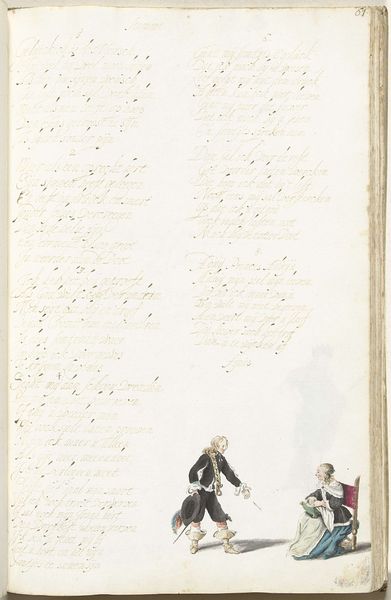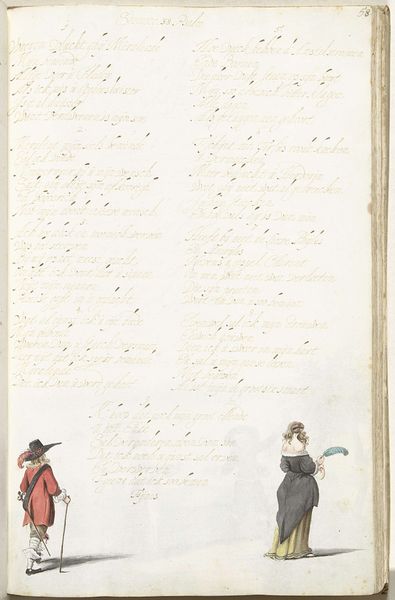
drawing, coloured-pencil, paper
#
portrait
#
drawing
#
coloured-pencil
#
dutch-golden-age
#
paper
#
coloured pencil
#
genre-painting
#
watercolor
Dimensions: height 313 mm, width 204 mm
Copyright: Rijks Museum: Open Domain
Curator: This delicate work, "Heer in Cape," was rendered in 1653 by Gesina ter Borch, a Dutch Golden Age artist. It is currently held in the Rijksmuseum. Editor: My initial impression is one of isolation; the tiny figure seems adrift on a vast, pale page filled with script. There’s something poignant about the smallness of the figure in such a boundless setting. Curator: Yes, the stark contrast is compelling. Ter Borch uses colored pencil and ink on paper to create a study of a man in a cape, his presence defined against the handwritten text. Consider how the texture of the paper itself becomes part of the overall composition, influencing the play of light and shadow on his garments. Editor: From a historical standpoint, the relationship between the visual image and the text surrounding it feels quite charged. Was ter Borch creating a portrait, or more like a marginal illustration that complements, or perhaps even contradicts, the literary piece that it accompanies? Who was this man in the cape and what can we understand about his placement? Curator: Interesting questions! In this piece, Ter Borch utilizes color sparingly, focusing primarily on line and form. There is an element of precision here, which lends itself to semiotic considerations; note, for example, how the cape's drape and the hat's broad brim dictate its visual impact as well as narrative context within an open book. Editor: I agree that Ter Borch gives much attention to his posture; however, what resonates most with me is how the drawing speaks volumes about the socio-economic status that cloaks this solitary character. Note his hat, his tailored doublet, his expression; all these details point towards certain conventions of presentation within Dutch society at that particular time. Curator: Exactly. The drawing also encourages us to reflect upon materiality. It invites an inquiry into paper and the importance of mark-making in establishing aesthetic qualities for both script and rendering of the figure. The tension is beautiful in the visual push-and-pull within the constraints of line versus shadow. Editor: Ter Borch successfully encapsulates an individual; yet, the artwork opens avenues through which we ponder societal constructs and power structures as inscribed in cultural imagery. It challenges our very expectations of portraiture. Curator: Yes, examining "Heer in Cape" through formalism and historical analysis, we can both admire Ter Borch's command over technique and explore deeper, richer contexts through which society shapes what is perceived to be valuable. Editor: It is an impactful combination of social, cultural, and formal art exploration.
Comments
No comments
Be the first to comment and join the conversation on the ultimate creative platform.
